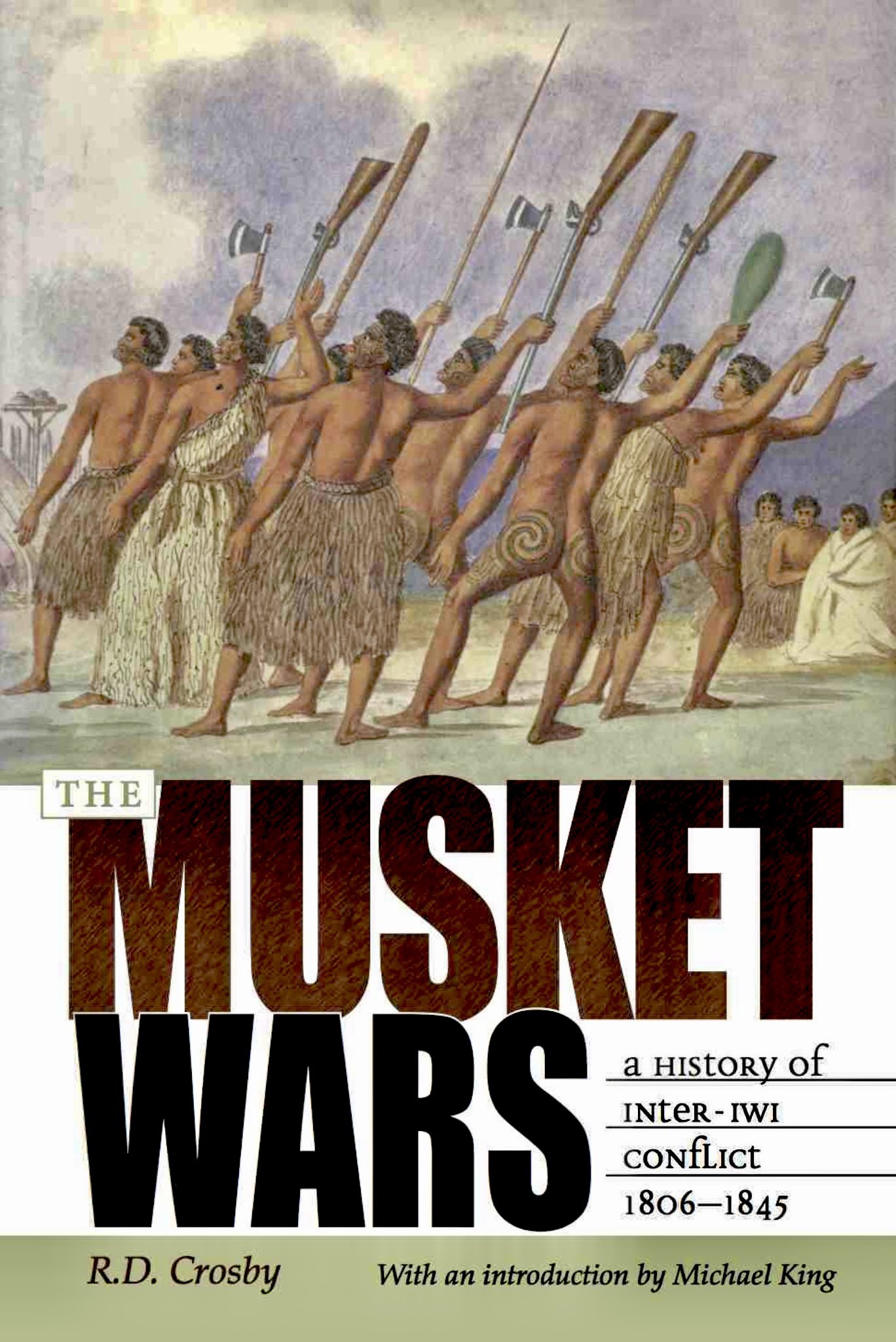
The Musket Wars: A History of Inter-Iwi Conflict 1806 – 1845 Ron Crosby First published by Reed in 1999, with an introduction by Michael King, The Musket Wars established Ron Crosby’s reputation as a daring, original chronicler of New Zealand history. This best-selling history provides the first comprehensive account of the wars that ravaged the country in the early 1800s, when iwi with newly acquired muskets unleashed terrible utu (revenge) on foes, helped by other introductions like potatoes that fuelled long-range taua (war parties). Ron Crosby weaves the strands of this conflict into an immensely readable narrative, guiding the reader through its complexities with lists of protagonists, a chronology, indexes and above all, superb maps and illustrations. New Zealand history writing in recent years has been obsessed with the Treaty of Waitangi and the Maori grievances that followed. It has been dominated by Europeans offloading their guilt about the real or alleged wrongs of colonialism. The tenor of the writings has been: (1) Maori society was peaceful and unified until the arrival of British sovereignty; (2) Maori were hoodwinked into signing the treaty; and (3) everything that happened after the treaty was to the detriment of Maoridom. The pre-treaty period has barely rated a mention, especially the period from 1806 when muskets first fell into Maori hands and became the currency of tribal power. James Belich’s wide-ranging book, Making Peoples, mentions the musket wars in passing in an otherwise revisionist look at New Zealand history. Most historians haven’t bothered. It has been up to Ron Crosby, an Auckland-born lawyer practising in Marlbor-ough, to put this great historiographic oversight right and he has done so in splendid style. The Musket Wars is not simply an account of the bloodiest period of New Zealand inter-tribal warfare but an historical indulgence well written and superbly illustrated – a book on par with The New Zealand Wars: A History of Maori Campaigns and the Pioneering Period, James Cowan’s two-volume classic published in the 1920s (dealing with the European-Maori wars). The introduction of the musket changed Maori society forever. Warfare, a traditional feature of Maori life, was transformed literally at the barrel of the musket. Those tribes fortunate enough to trade with Europeans and acquire guns achieved a military advantage well beyond anything traditional weapons could offer. Not only could the musket take lives at a distance and more quickly than in the past but the cost was many times higher. No one knows exactly how many Maori were victims of the Musket Wars but as many as 60,000 are thought to have been killed, enslaved or become refugees forced to migrate. The Maori population of New Zealand in 1810 has been estimated at between 100,000 and 150,000 so the impact of the wars in terms of straight casualties, depopulation and iwi cleansing was far worse than the fate suffered by Kosovar Albanians at the hands of Serbia. Torture, brutality, slavery and cannibalism were features of Maori warfare before the arrival of the musket; the white men’s guns simply lifted the scale and ferocity several notches. It is legitimate to talk about genocide and the Musket Wars in the same breath because the new weapons created a military imbalance that had never before been a part of Polynesian warfare. The North Taranaki invasion of the Chatham Islands in 1835 and the destruction of the peaceful Moriori inhabitants is but one of numerous examples of musket-led genocide. Historian Michael King, an expert on the Chathams, notes in The Musket Wars’ introduction: “The disproportionately lethal effect [of muskets] on opponents who lacked them upset the balance of pre-European tribal life and took a terrible toll. […]
